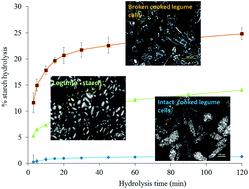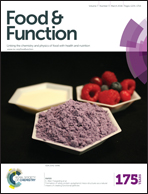Intactness of cell wall structure controls the in vitro digestion of starch in legumes
Abstract
Increasing the level of starch that is not digested by the end of the small intestine and therefore enters the colon (‘resistant starch’) is a major opportunity for improving the nutritional profile of foods. One mechanism that has been shown to be successful is entrapment of starch within an intact plant tissue structure. However, the level of tissue intactness required for resistance to amylase digestion has not been defined. In this study, intact cells were isolated from a range of legumes after thermal treatment at 60 °C (starch not gelatinised) or 95 °C (starch gelatinised) followed by hydrolysis using pancreatic alpha amylase. It was found that intact cells, isolated at either temperature, were impervious to amylase. However, application of mechanical force damaged the cell wall and made starch accessible to digestive enzymes. This shows that the access of enzymes to the entrapped swollen starch is the rate limiting step controlling hydrolysis of starch in cooked legumes. The results suggest that a single cell wall could be sufficient to provide an effective delivery of starch to the large intestine with consequent nutritional benefits, provided that mechanical damage during digestion is avoided.


 Please wait while we load your content...
Please wait while we load your content...